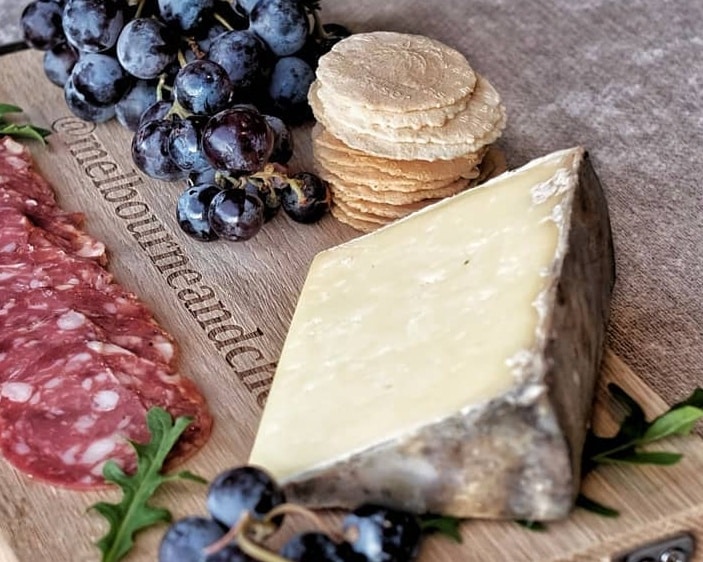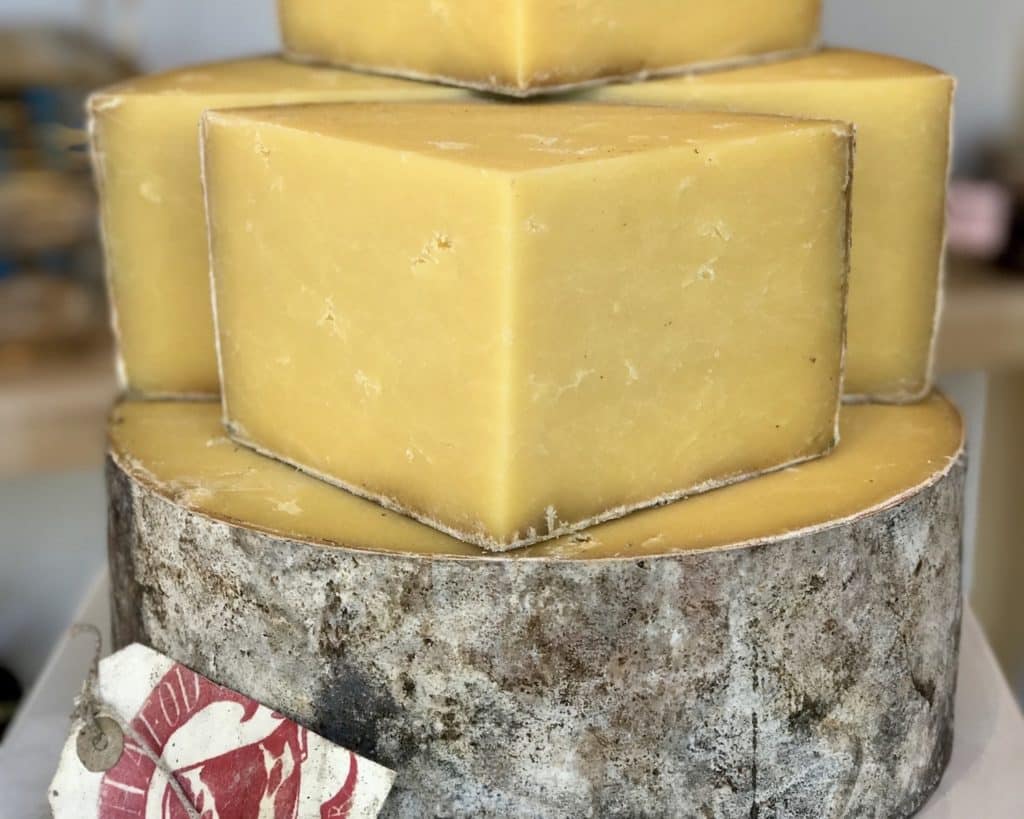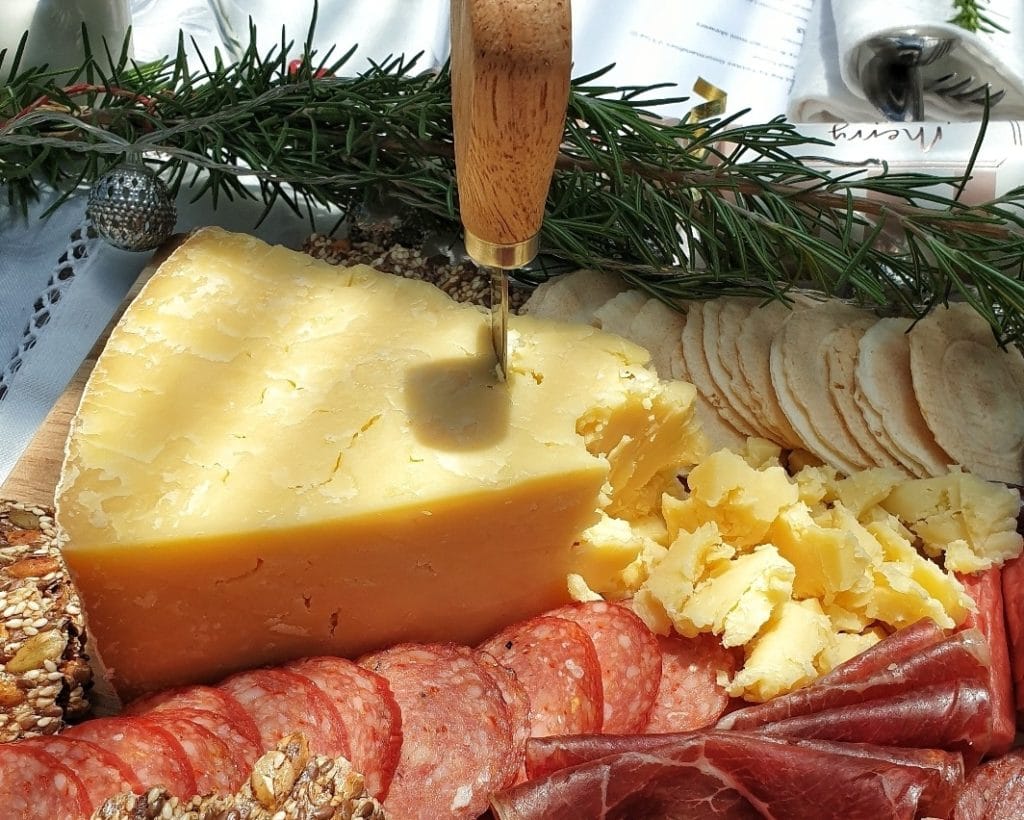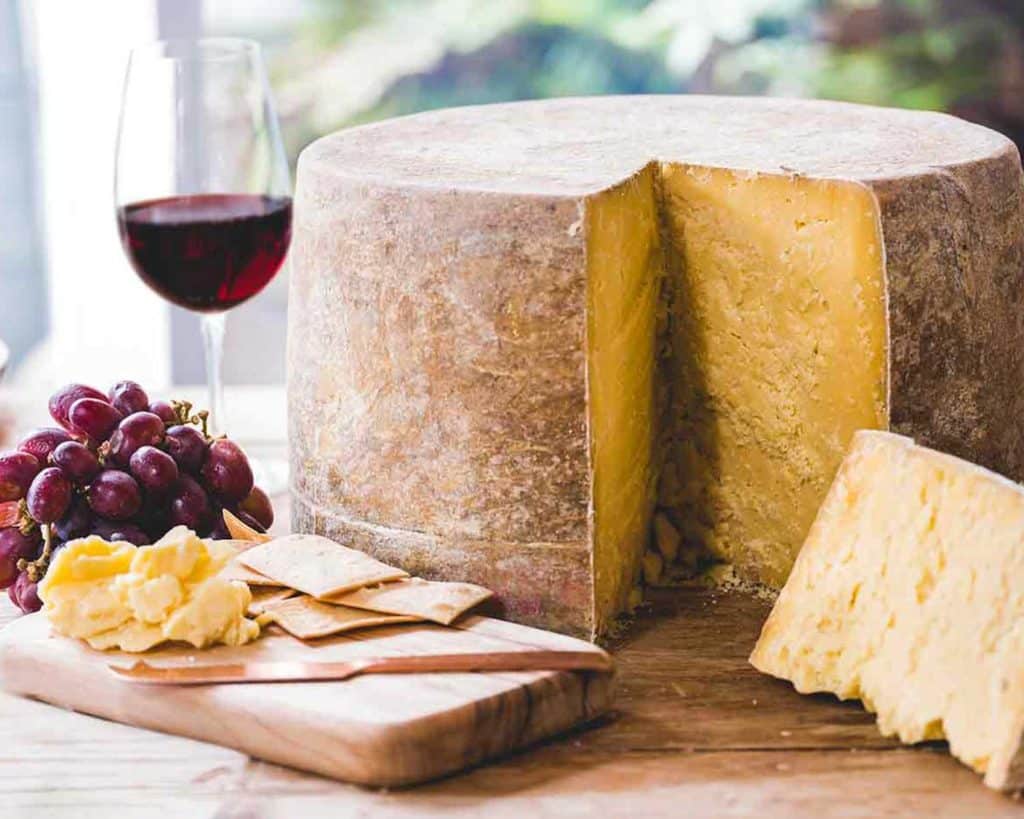Raw milk Single and Double Gloucesters are a bit of a rarity across England now. Read on to learn all about one of the best, Appleby’s Double Gloucester.
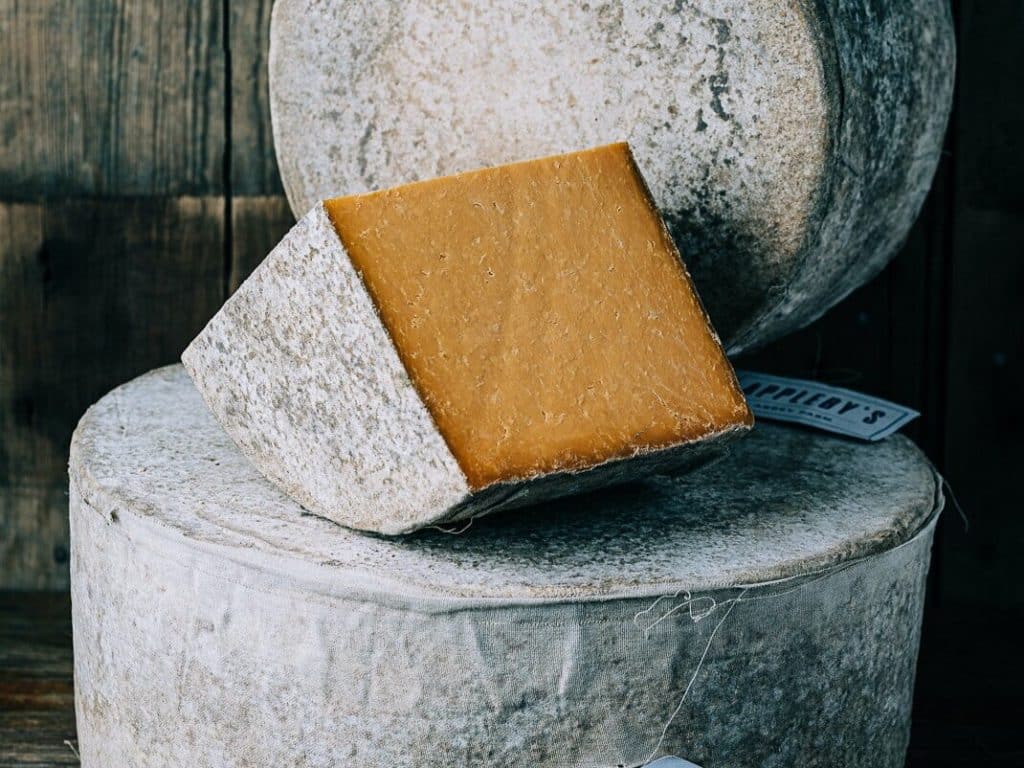
Where does Appleby's Double Gloucester come from?
Appleby’s Double Gloucester is a raw milk cheese made on Edward and Christine Appleby’s farm in Cheshire. As the name suggests, this farm is also home to Appleby’s Cheshire. Gloucester is a traditional pressed uncooked cheese that finds its roots in the Gloucestershire in the 16th century. Single Gloucester is made from partly skimmed milk whereas Double Gloucester uses whole fat milk taken from both morning and evening milking.
How is Appleby's Double Gloucester made?
Using a 300-year-old recipe, head cheesemaker Garry Gray crafts a Double Gloucester that is less acidic and smoother in texture than their Cheshire. As is the case with their signature Cheshire, they add the natural dye annatto to impart an orange colour to the cheese’s paste.
Overall, the two recipes are quite similar except for variations in timing, temperature and acidity of the curd. It takes around 4 hours 20 minutes, at a temperature of up to 38.9°C (102°F), for the milk to reach the correct acidity after renneting. At this point, they cut the curds, press them for 48 hours and wrap the cheese in cloth. Maturation can last up to eight weeks.
How to serve Appleby's Double Gloucester
At this age, Appleby’s Double Gloucester develops a firm but moist texture. Its flavours are reminiscent of warm buttered toast with subtle notes of minerals and salt. Also, watch out for a long, tangy finish. This Double Gloucester pairs beautifully with light-bodied reds such as Pinot Noir and Zinfandel or even a white like Sancerre. If you prefer pairing with beer, this raw milk beauty matches well with a number of local ales.
Thank you for reading
Thank you for reading this post about yet another amazing artisanal cheese. Have you tried this cheese before? Drop us a comment below with your thoughts.
If you enjoy learning about new cheeses, you can subscribe to our newsletter below. You will hear from us about once a week as we share new cheese profiles with you.
Finally, keep scrolling to find some more cheeses and recipes that have been recommended for you. Keep it cheesy!
